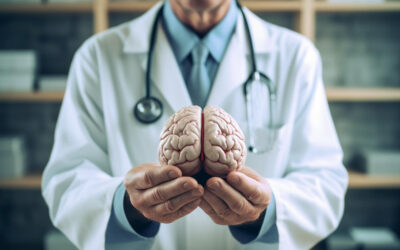Chronic pain is a huge growing issue both in the United States and globally. The CDC reports that there are about 20.9% of Americans that experience chronic pain.1 That’s about 51.6 million people! Chronic pain can come from genetic conditions, injuries, concurrent medical conditions or pain disorders.
Low back pain is one of the most common forms of chronic pain. In fact, 75-85% of Americans have back pain at some point throughout their lives, with the majority being low back pain in the lumbar area of the spine.2 In many cases, the pain is temporary, being resolved by rest, pain management, and surgery. However, about 50% of people will struggle with recurring episodes of pain.
Causes of low back pain can be from:
- Sprains and strains
- Trauma
- Bone fractures
- Herniated disk (A slipped or collapsed disk)
- Sciatica (Pain, numbness or weakness in the leg caused by pinching of sciatic nerve)
- Osteoarthritis (the breakdown of cartilage in the spine)
- Lumbar spinal stenosis (narrowing of the spinal canal in your low back)
- Scoliosis (a curving in the spine)
Current treatments for low back pain range depending on the condition. Medications can help manage pain levels but put patients at risk for addiction and dependence. Treatments like physical therapy, acupuncture, electromagnetic stimulation, and cortisone injections can have longer term effects but they don’t help restore disk tissue, slow disease progression or address any physical aspects of where the pain is coming from.
Stem cell transplantation is emerging as a potential treatment in regenerative therapy. These powerful cells have the ability to turn into a variety of different cells giving them unique potential for repairing and replacing cells around the body.
Mesenchymal stem cells (MSCs) are particularly potent because they have anti-inflammatory properties and are low immunogenicity, which means they are less likely to trigger an immune response.
What are MSCs
MSCs stand out as a powerful tool in regenerative medicine. They have special characteristics allowing them to restore and repair cells through their ability to transform into different cell types. This is called multipotency. They also can self-renew which helps them maintain their populations over extended periods of time, something that’s very important in regenerative medicine.3
We find MSCs in three main sources—bone marrow, umbilical cord blood, and adipose tissue. Of these three, umbilical cord MSCs (UC-MSCs) seem to be most effective for a variety of reasons. They multiply faster than other MSCs and can differentiate into the three primary cell layers, making them vital in tissue repair processes. They also have the lowest likelihood to trigger an immune response making them a very safe option for transplantation.4
Other advantages for using UC-MSCs include, their non-invasive collection from the body, lower risk of infection, multipotent qualities, have low risk for forming tumors, and have low immunogenicity (the likelihood of triggering an immune response).5 These factors position them as an excellent option for various clinical and therapeutic applications, including regenerative medicine for low back pain.
How UC-MSCs help with Spinal Disc Degeneration
Research has shown that UC-MSCs have many advantages for helping manage low back pain and treat functional recovery in spinal disc conditions.
A condition called intervertebral disc degeneration (IDD) is one of the most common causes of lower back pain. It’s when the intervertebral discs (IVDs), those that provide protection, cushion and mobility in the spine, start to break down. UC-MSCs multiply quickly, and can turn into nucleus pulposus cells (NPCs), the innermost cells in the IVDs, and secreting factors that regenerate disc cells and reduce inflammation. This can stop the progression of IDD and some studies have even shown the discs regenerate after treatment.6
Chronic low back has been improved with UC-MSC treatments in some patients with discogenic back pain, pain that comes from the breakdown or damage to spinal disks. UC-MSCs were transplanted indirectly into damaged discs. Both pain and function were immediately improved after treatment and low back function continued to improve for up to 2 years after treatment. Seeing that patients in this study has undergone other treatments that were unsuccessful, the UC-MSC was an exciting result for heal degenerating and damage spinal discs.7
An in-depth review of the literature explored stem cell therapies for disc and cartilage regeneration. The review focused on the benefits of Wharton’s Jelly stem cells (WJSC) which are a special type of stem cell found in the umbilical cord. They have many benefits for regenerative medicine, such as they are very young making them very potent, can be harvested easily, multiply very quickly, and can become many different types of cells so can be used in many areas of the body. For these reasons UC-MSC and WJSCs have demonstrated effectiveness in regenerating spinal discs and cartilage. The authors report that these therapies could be a huge change in how disc degeneration and cartilage damage are treated.8
Takeaways
At a time when current treatments for low back and spine pain are limited to pain management, MSCs, and particularly UC-MSCs are an exciting up-and-coming treatment. Their unique properties, such as fast multiplication, anti-inflammatory, regeneration potential and low likelihood to trigger an immune response, make them a powerful candidate for restoring and regenerating cells in the spine to heal low back pain from its root cause. Research has already shown its clinical effectiveness in reducing pain, increasing function and restoring spinal discs in degenerative conditions. There is an exciting future ahead for regenerative medicine and having an impact in healing low back and improving patients’ quality of life.
Resources
- Rikard, S. M. (2023). Chronic Pain Among Adults—United States, 2019–2021. MMWR. Morbidity and Mortality Weekly Report, 72. https://doi.org/10.15585/mmwr.mm7215a1
- https://www.aans.org/en/Patients/Neurosurgical-Conditions-and-Treatments/Low-Back-Pain
- Li, Z., Hu, X., & Zhong, J. F. (2019). Mesenchymal Stem Cells: Characteristics, Function, and Application. Stem cells international, 2019, 8106818. https://doi.org/10.1155/2019/8106818
- Nishimura, T., Yamaguchi, S., Yoshimura, K., Rubinstein, P., & Takahashi, T. A. (2011). Isolation and characterization of mesenchymal stem cells from human umbilical cord blood: reevaluation of critical factors for successful isolation and high ability to proliferate and differentiate to chondrocytes as compared to mesenchymal stem cells from bone marrow and adipose tissue. Journal of cellular biochemistry, 112(4), 1206–1218. https://doi.org/10.1002/jcb.23042
- Nagamura-Inoue, T., & He, H. (2014). Umbilical cord-derived mesenchymal stem cells: Their advantages and potential clinical utility. World journal of stem cells, 6(2), 195–202. https://doi.org/10.4252/wjsc.v6.i2.195
- Huang, H., Liu, X., Wang, J., Suo, M., Zhang, J., Sun, T., Zhang, W., & Li, Z. (2023). Umbilical cord mesenchymal stem cells for regenerative treatment of intervertebral disc degeneration. Frontiers in cell and developmental biology, 11, 1215698. https://doi.org/10.3389/fcell.2023.1215698
- Pang, X., Yang, H., & Peng, B. (2014). Human umbilical cord mesenchymal stem cell transplantation for the treatment of chronic discogenic low back pain. Pain physician, 17(4), E525–E530. https://pubmed.ncbi.nlm.nih.gov/25054402/
- Richardson, S. M., Kalamegam, G., Pushparaj, P. N., Matta, C., Memic, A., Khademhosseini, A., … & Mobasheri, A. (2016). Mesenchymal stem cells in regenerative medicine: focus on articular cartilage and intervertebral disc regeneration. Methods, 99, 69-80. https://doi.org/10.1016/j.ymeth.2015.09.015




